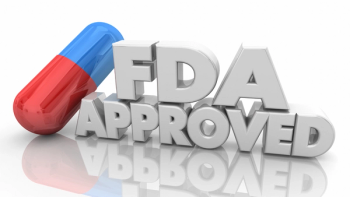It’s been a tumultuous period for the pharmaceutical industry. Over the past 5 years, the market has seen massive upswings and devastating drops due to events like a global pandemic and a chaotic regulatory environment emerging in the United States. As major events occur around the world, other markets are starting to adapt to survive the changing landscape.
Key Takeaways
- Saudi Arabia is working with biotech companies to entice them to open businesses in the country as part of its Saudi Vision 2030 program.
- Luminary Therapeutics is exploring its options in the Saudi region and believes there is potential to grow its CAR-T business.
- Luminary is developing CAR-T therapies using Gamma Delta cells.
What role will Saudi Arabia play in the biotech industry?
One such market is Saudi Arabia. While the country has been able to build its economy from selling oil, that market might not have a steady future. The country, actively looking to expand its industrial diversity, launched a program titled Saudi Vision 2030 which lays out a plan to achieve its goals in the coming years.
While this program has been active for almost a decade, it’s starting to make big movements into the biotech sector. Luminary Therapeutics is one of the companies that’s opened communications with the Saudis in an attempt to get a foothold in an emerging market. Luminary’s CEO and founder Jeff Liter spoke with Pharmaceutical Executive about the work it’s doing with CAR-T therapies, the current investing climate, and why the Saudi market is so appealing at the moment.
When asked about the key challenges CAR-T is facing, Liter says, “First, there’s the cost and expense of a centralized manufacturing CAR-T therapy. Most of what’s in the commercial market space is autologous. So, about 85-90% of the products cost, on average, anywhere from $180,000-210,000 just to make. Which means in the marketplace, they’re priced anywhere from $475,000 all the way up to $2 million.”
He continues, “So, I include cost and centralized manufacturing as a single problem, and that's one of the things that we at Luminary are highly focused on. We're using a mechanism called allogeneic (as opposed to autologous) CAR-T therapies, where we can bring the cost down to under $10,000 per product, and we do that by the ability to make 450 doses out of a single healthy donor. Certain allogeneic products have not fared very well in the clinical trials, with NK cells being an example that disappointed in their initial clinical trials. We use Gamma Delta cells, which makes us extremely different.”
Results matter
The cost of medicine is a key talking point across the pharmaceutical industry. While the high cost of CAR-T therapies has been noted as an issue, it’s not the only problem the sector is facing. According to Liter, it’s also a matter of results.
“The second big challenge is, so far, CAR-T therapies are only showing just tiny promises, embers of hope for solid tumors,” he says. “Luminary Therapeutics has three different new approaches for solid tumors with CAR-Ts that we’re convinced that one or some combination of our three approaches will finally knock that door down. Solid tumors make up about 80% of the overall cancers out there, so these are the two big industry challenges that currently exist for oncology.”
Luminary uses its own unique platform to develop its therapies. The Gamma 2.0+ platform develops two subset solutions, which Liter explains increases the therapies’ effectiveness against cancers. He also explains that, at the moment, there’s only a handful of companies even using Gamma Delta as their chassis due to it being an under-studied immune cell. And out of that group, Luminary is still taking a unique approach.
He says, “We're the only company that we're aware of today that uses the two primary subsets of Gamma Delta cells. All the other Gamma Delta cell companies out there use one or the other. That combination of using both subsets gives us the immediate strike of shock and awe, as we like to say, where it clears out as many of those pathogenic cells as it can. And then the V Delta ones are effectively the other subset. The Gamma Delta don’t last, but the V Delta do. Not only do they last in the body up to three years, but they can also effectively hone to tissue or solid tumors. We also cloak these cells (in a fashion) to make them effectively non detectable by the recipient but still functional.”
As Liter describes it, Luminary is working in an emerging sector of another emerging sector. The goal of his approach is to bring new ideas to the space that he believes are sorely needed.
Emerging in an emerging sector
Of course, while working in a small and unique emerging sector is exciting, it comes with challenges. Mainly, finding funding can be difficult. That’s true under normal circumstances, but the modern landscape has things even more difficult for companies like Luminary. This forced the company to develop new strategies for maintaining its runway.
Liter explains, “Biotech, and cell therapy in particular, have struggled to attract the attention of investors over the last two-and-a-half years. There was a big bump of investment when first CAR-T came out for blood tumors, but that therapy hasn’t made the next to step a new therapeutic that is highly effective. As a result, investment has been lacking. We have been fortunate enough to get a combination of financing from some high net-worth individuals (not the traditional VC route) and grant dollars, which we’ve become very good at getting through some very hard work. In fact, we have four phase-one clinical trials currently going with less money than most people would take to even do one.”
Saudi Vision 2030
Liter provided the opening remarks and keynote address at the Saudi Biotech Welcome Reception at this year’s BIO International in Boston. His Excellency Abdulaziz Hamad Al-Ramaih, vice minister of health for planning and development in Saudi Arabia. In his role, he ensures that the country’s health-sector planning aligns with the Saudi Vision 2030 goals. He plays a critical role in shaping Saudi Arabia’s growing health care industry.
According to Liter, Luminary has a strong relationship with the Saudis and plans to be a key player in the country.
“At this year’s JP Morgan conference in January 2025, we bumped into and engaged with NEOM, which is an investment group focused on bringing various technology industries, including biotech, to the Saudi region, specifically the Neom region, where a new city is being developed as part of the country’s vision for 2030.”
He continues, “They were highly discerning and looking for disruptive technologies that they felt had promise. Further conversations have suggested that Luminary is a fit, so we took the extra step to visit with the hospitals, clinicians, the Ministry of Health, and the Saudi NIH. We are currently going to be meeting with the Saudi FDA. There's potentially a process where we could actually create a business there and not necessarily feel that we couldn't compete against the Novartis, BMS, and Gileads of the world. We see an opportunity where we could build a franchise and a business right in the kingdom of Saudi Arabia.”
According to Liter, biotech is one of the sectors that the Saudis are very interested in bringing into their country. The plan is to localize it and then build it out to part of the country’s diversified revenue stream. Aside from moving the country beyond oil, the goals of the program are to bring new types of jobs to its citizens and expand its export offerings.
This provides a big opportunity for Luminary.
“Given the lack of interest of investment in the US and in Europe for new, disruptive CAR-T therapies that are beyond CD19 and BCMA, single target CAR-T therapies are not being appropriately capitalized,” Liter says. “The fact that the Saudi region is willing to embrace these new disruptive technologies will bring benefits to the entire industry, well beyond Saudi Arabia.”
He continues, “We're certainly hopeful that once we get our products into the clinic for both the allogeneic-cost component and the solid-tumor component, that will advance the entire cell therapy industry in multiple ways. Now, both solid tumor and allogeneic Gamma Delta cells must be proven in the clinic. This affords us that opportunity to do that, and if our hypothesis is right with new novel targets, then I think the entire field will advance. Given that we have an allogeneic product, we could ship to anywhere in the world from a single manufacturing site.”





